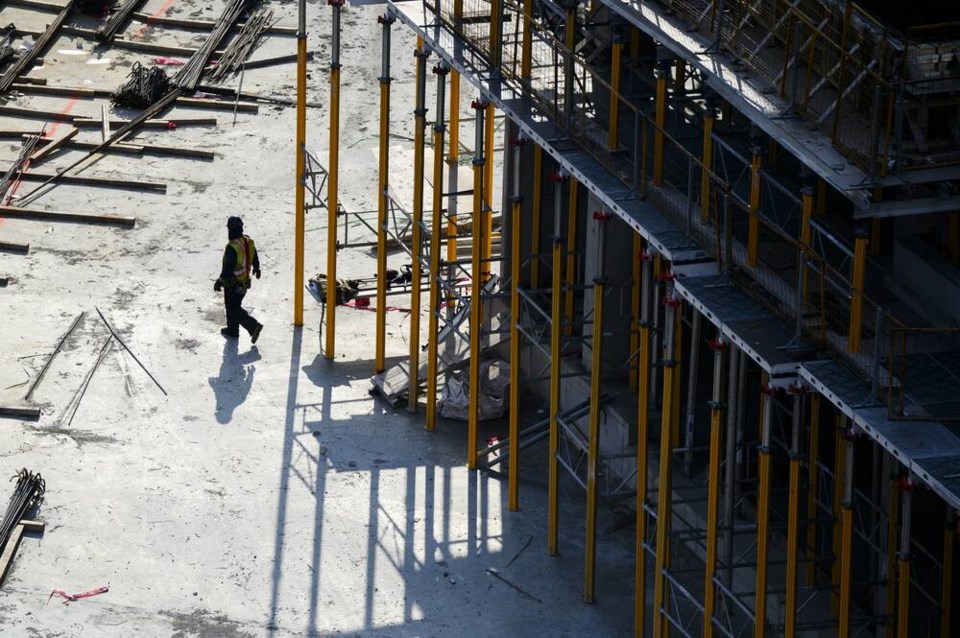A commentary by a retired business leader who lives in Victoria.
Statistics sa国际传媒 reported record population growth of 1,050,000 in 2022, with 96 per cent coming from international migration. Permanent residents accounted for 437,000 of those immigrants while 613,000 were classified as non-permanent.
In November, the Trudeau government announced plans to grant permanent residency to 465,000 people in 2024, increasing that goal to half a million by 2025.
Combined with high non-permanent arrivals, this means sa国际传媒 will continue to have by far the highest immigration rate of any G7 country.
The government says we need all these immigrants to make up for a shortage of skilled workers. Permanent immigrants fall into four broad categories: economic (a.k.a., “skilled”), family reunification, refugees and protected persons, plus one more category listed as “humanitarian, compassionate and others.”
Economic immigrants make up about 60 per cent of the total. But how many of these skilled immigrants are being added to the already massive number of government employees? The answer to that question is alarming.
A recent Fraser Institute study found that between February 2020 and June 2023, government-sector job growth dwarfed private-sector growth in all 10 provinces, with the number of government jobs increasing by 11.8 per cent, compared to just 3.3 per cent in the private sector. The number of government bureaucrats increased by a whopping 446,000 over that period.
There’s no doubt that immigrants are needed to help fill worker shortages, but a million per year? sa国际传媒’s immigration policy needs to consider two stark realities: a serious housing shortage and a collapsing health care system — with both getting worse every day.
The year 2022 set a record for housing starts at 320,000, but that’s less than a third the immigration rate and not even enough to house the 446,000 employees added to the federal public service in the past three years.
A recent bulletin from public policy think tank SecondStreet.org reported the number of patients who died while waiting for medical care had reached a five-year high, further evidence that our that our health-care system has suffered a precipitous collapse.
And yet, incomprehensibly, the Trudeau government decided 2022 was a good time to bring in a million new immigrants. And vowed to continue immigration at the same rate for years. How could any sane government follow such a breathtakingly disastrous path?
During my career in the energy business, our company faced numerous existential challenges — not least how to survive the disastrous “Trudeau One” National Energy Program.
I realized an essential priority was to hold onto our highly proficient employees while reining in expenditures as much possible. Then we developed a priority list for increased capital expenditures when conditions improved (i.e., getting rid of Trudeau One!). Continuing to hire and spend would have been a path to certain disaster.
Sadly, for our benighted country, the Trudeau Two government has followed a path that has brought national disaster. Now even responsible, employed Canadians are having to camp in vehicles and tents because of an unprecedented housing shortage.
Canadians are suffering and dying on health-care waitlists while cruelly being forbidden access to private care by federal legislation.
And yet the government has reconfirmed an immigration goal of half a million permanent residents, with no lessening of non-resident immigrants, which will add another million immigrants in 2024.
It’s hard to know how much worse sa国际传媒’s housing shortage and health care crisis will get under these toxic policies. But they most surely will.
Adding to our difficulties, sa国际传媒 faces very serious economic stagnation — also largely self-inflicted. Canadian GDP growth has stalled, and the outlook is dire.
A July 15 report from TD Economics says “Real GDP per capita has contracted over the last three quarters … Longer term, the OECD projects that sa国际传媒 will rank dead last amongst OECD members in real GDP per capita growth out until 2060 … Without fundamental changes … sa国际传媒’s standard-of-living challenges will persist well into the future.”
A nation’s GDP per capita is driven by private-sector investment. A 2022 C.D. Howe Institute report points out that invested capital per worker, which is key to a country’s ability to produce goods and services, “has been weak since 2015,” the year the Trudeau government came to power.
“Before 2015, Canadian business had been closing a long-standing gap with the U.S. Since 2015, the gap has become a chasm.”
The report’s ominous conclusion: “Having investment per worker much lower in sa国际传媒 than abroad tells us that businesses see less opportunity in sa国际传媒 and prefigures weaker earnings and living standards.”
The stark reality is that those millions of hopeful immigrants entering sa国际传媒 will find a country not only unable to provide health care and housing for its citizens, but also experiencing diminishing overall living standards.
And a national government that doesn’t seem to care.
>>> To comment on this article, write a letter to the editor: [email protected]



